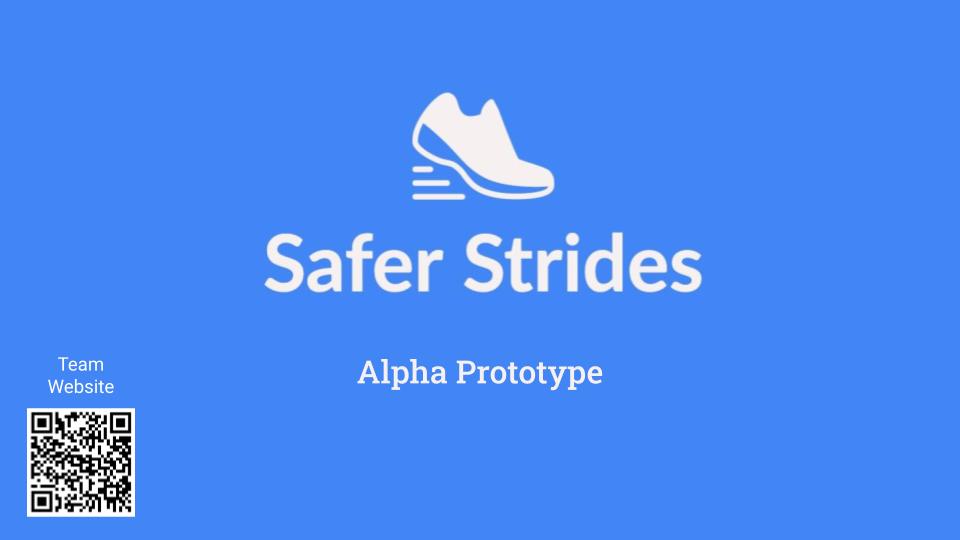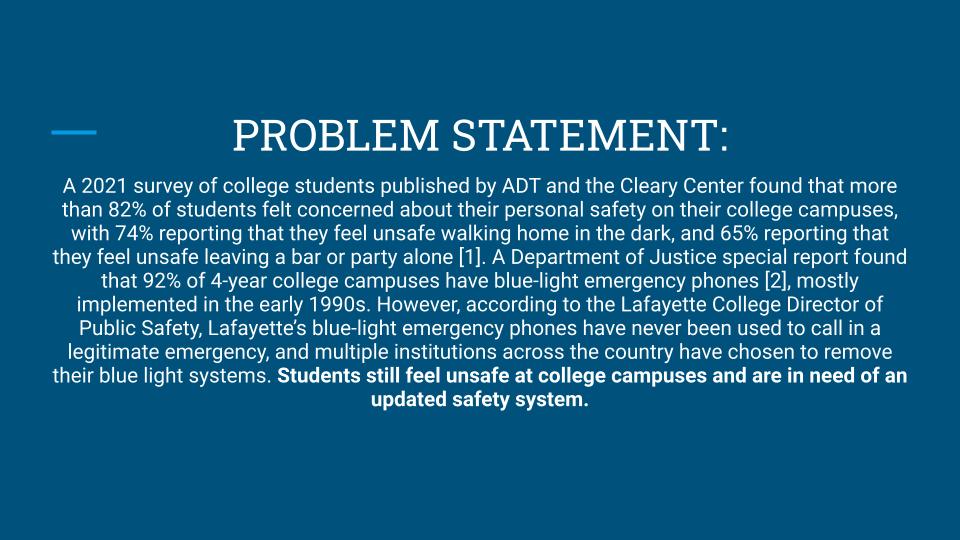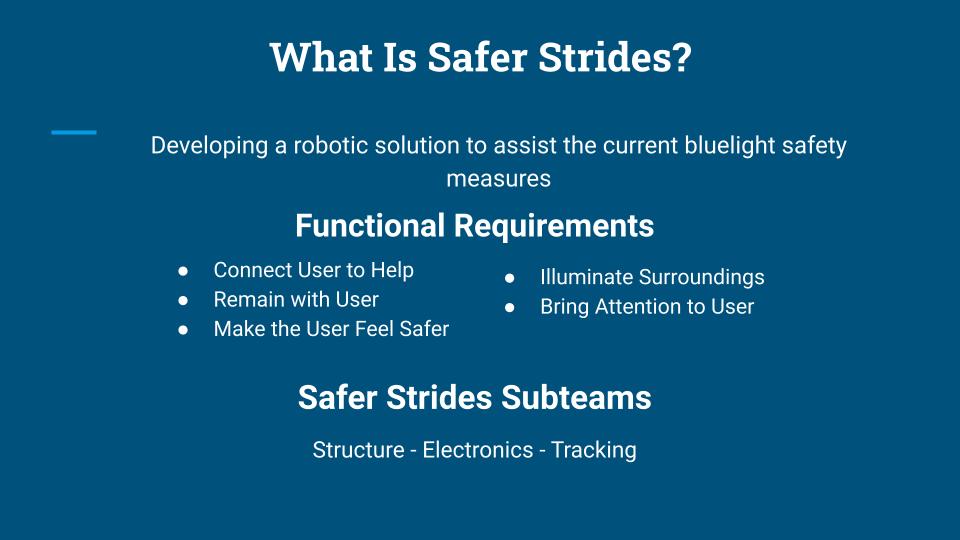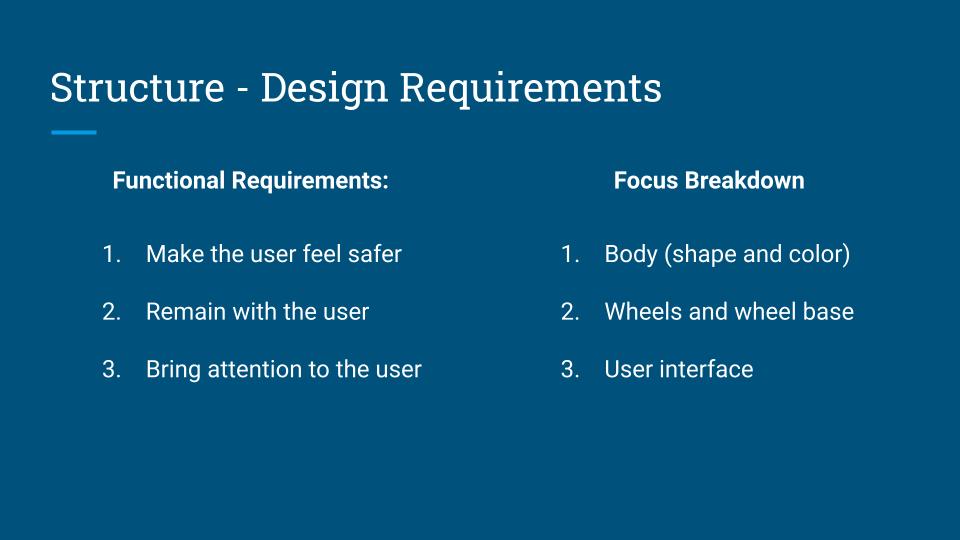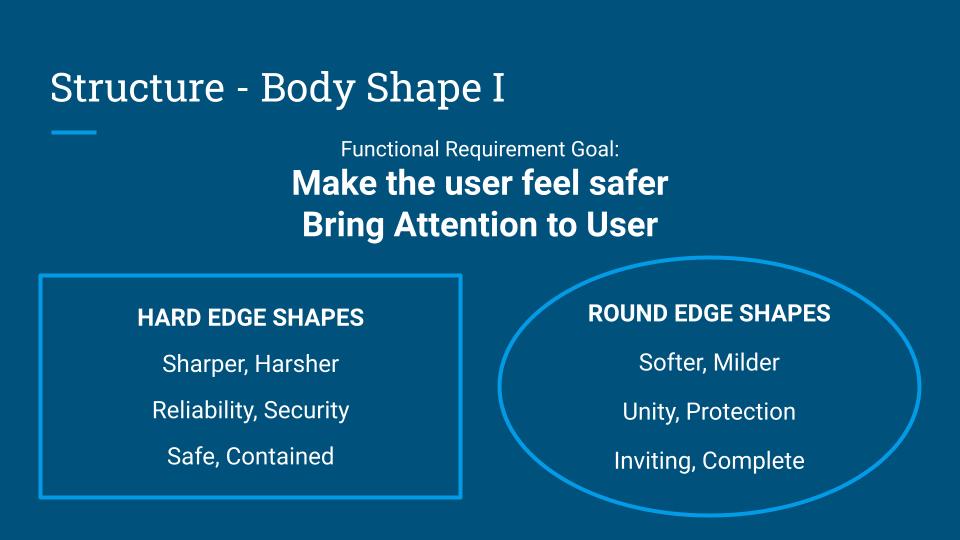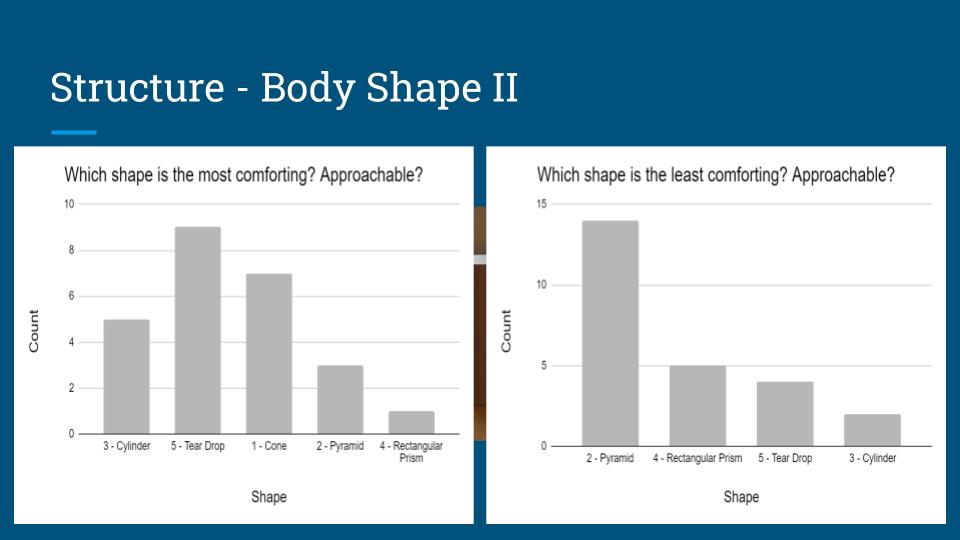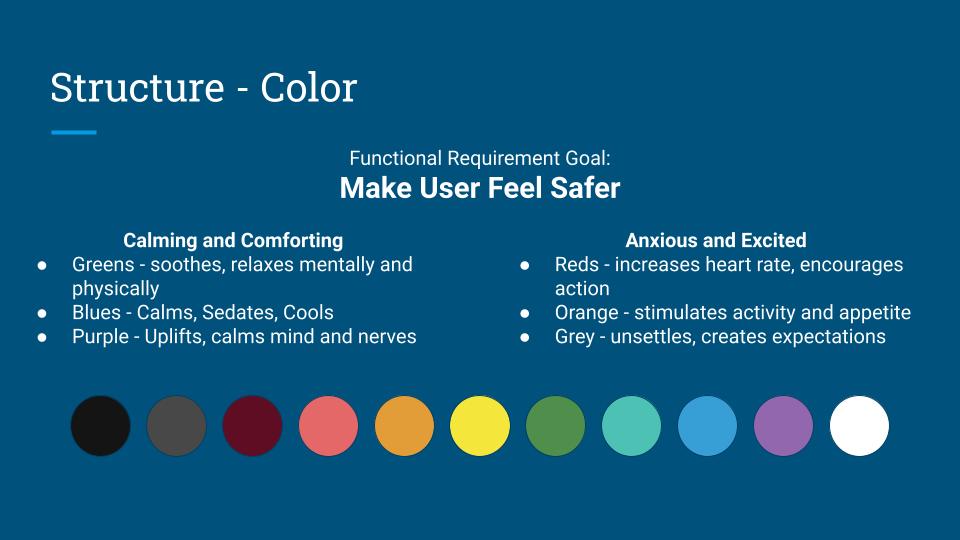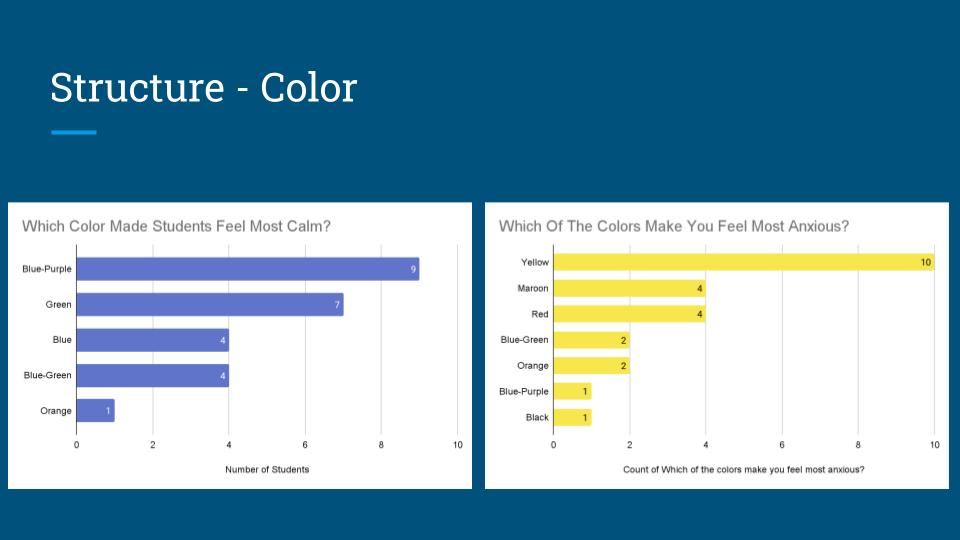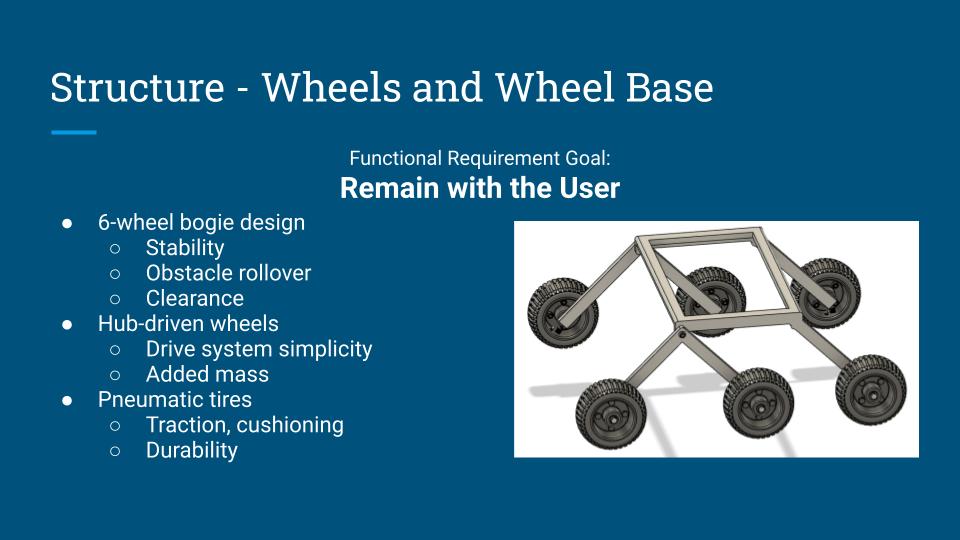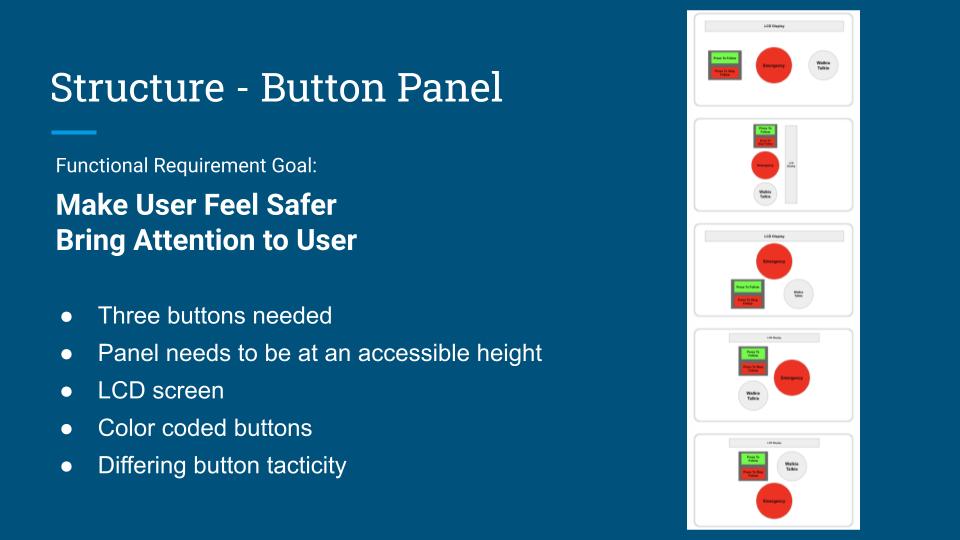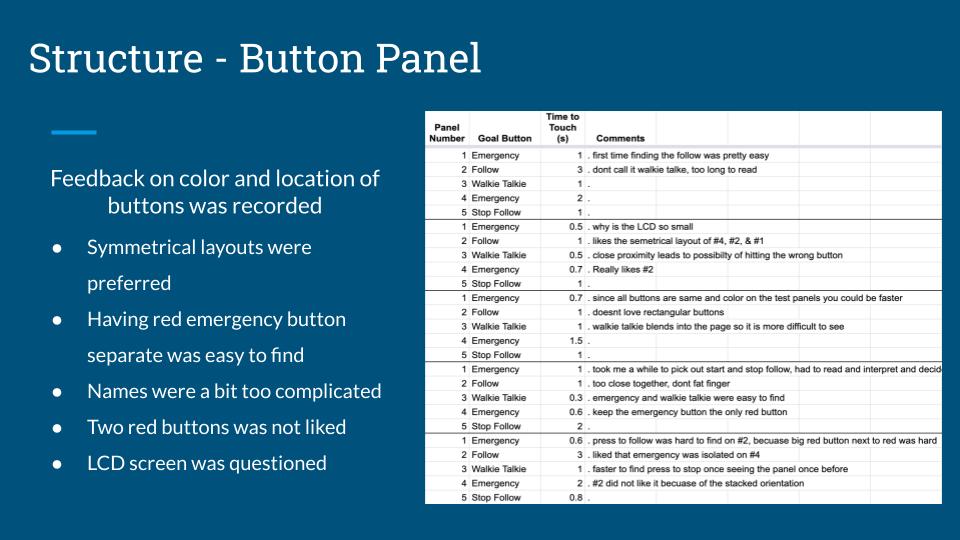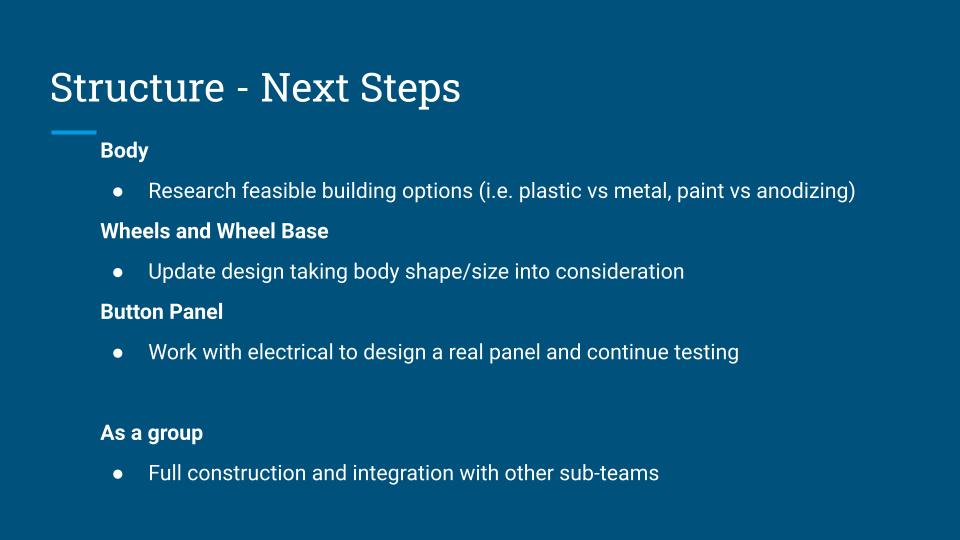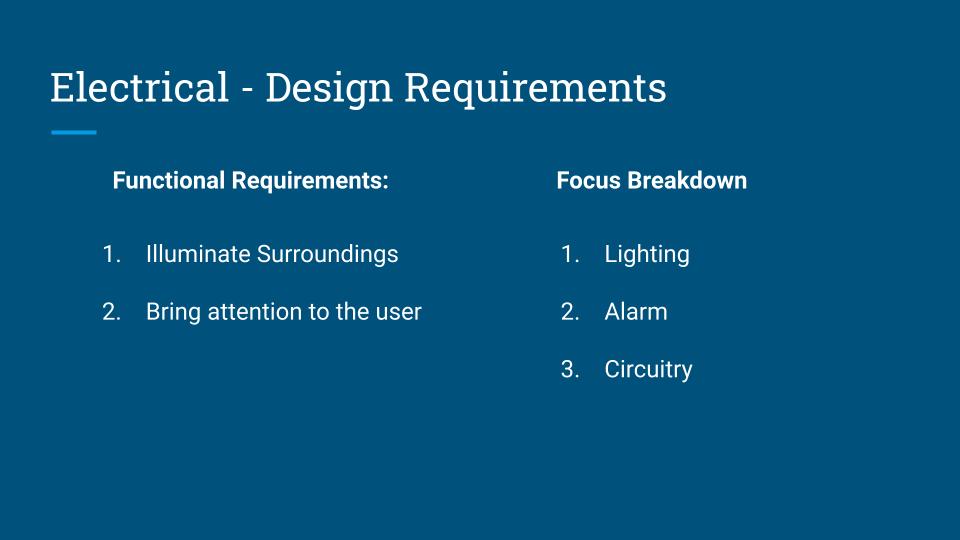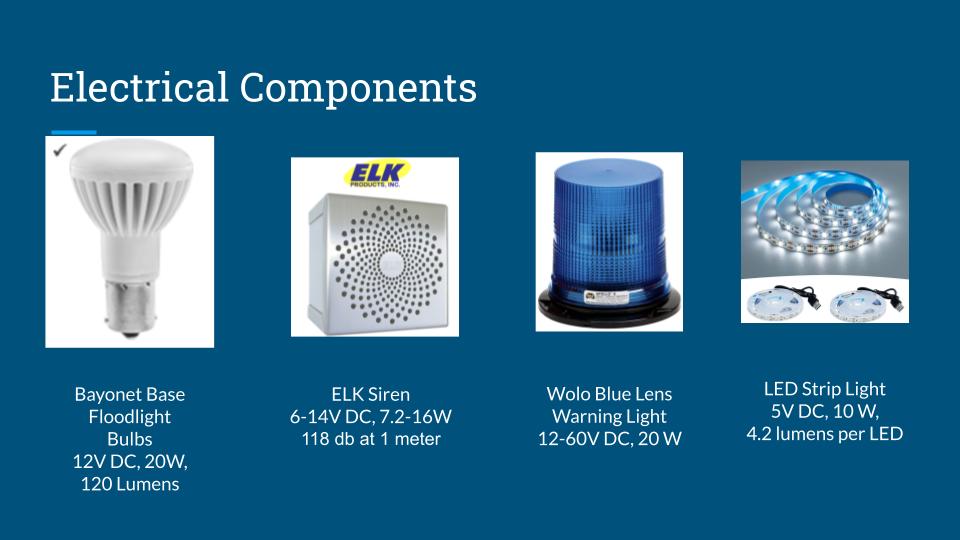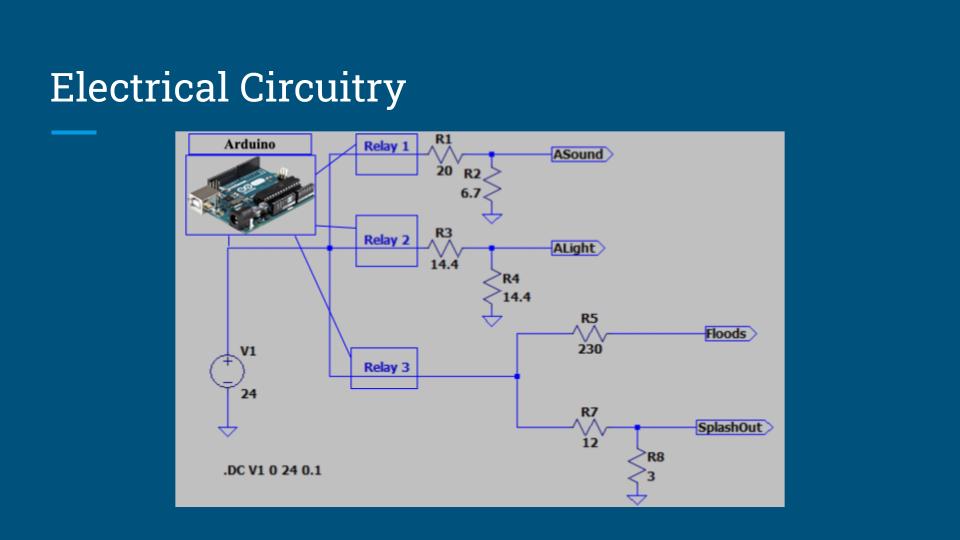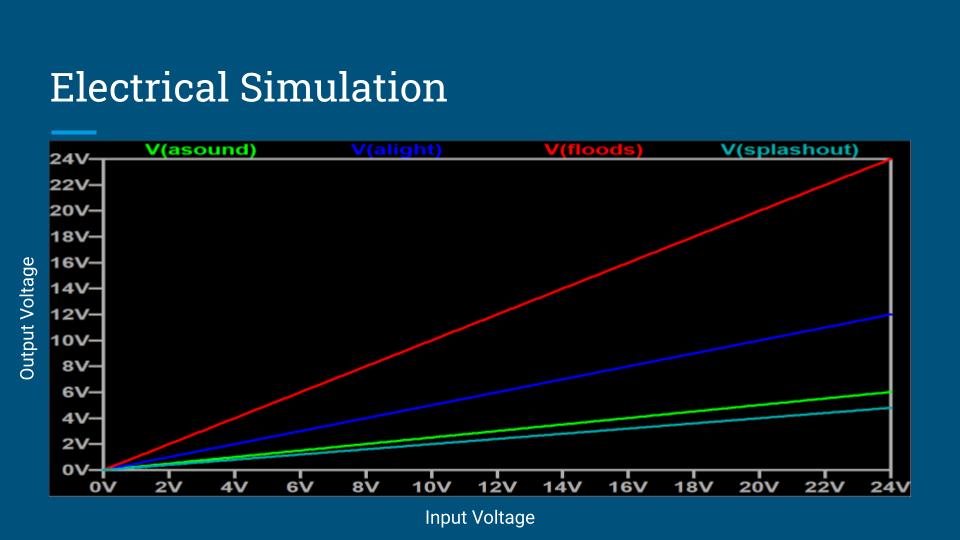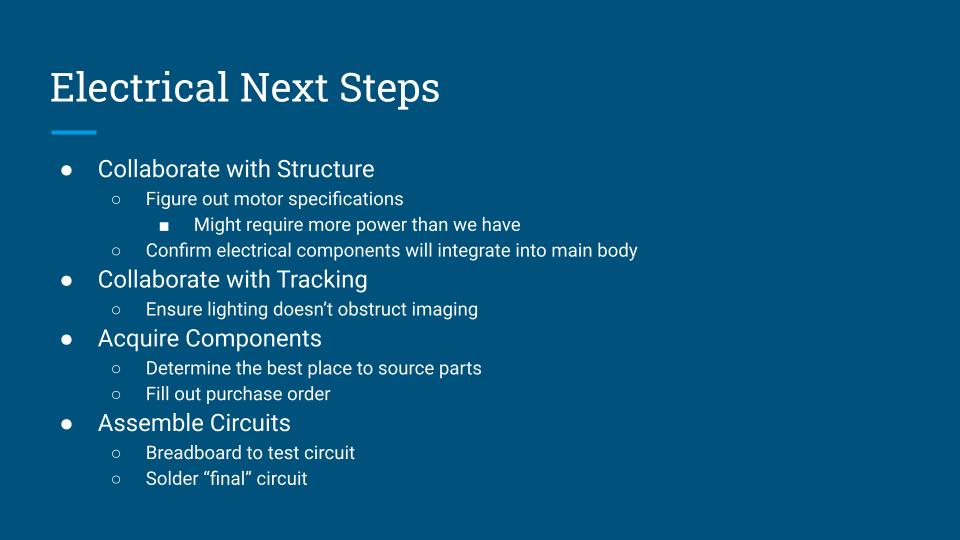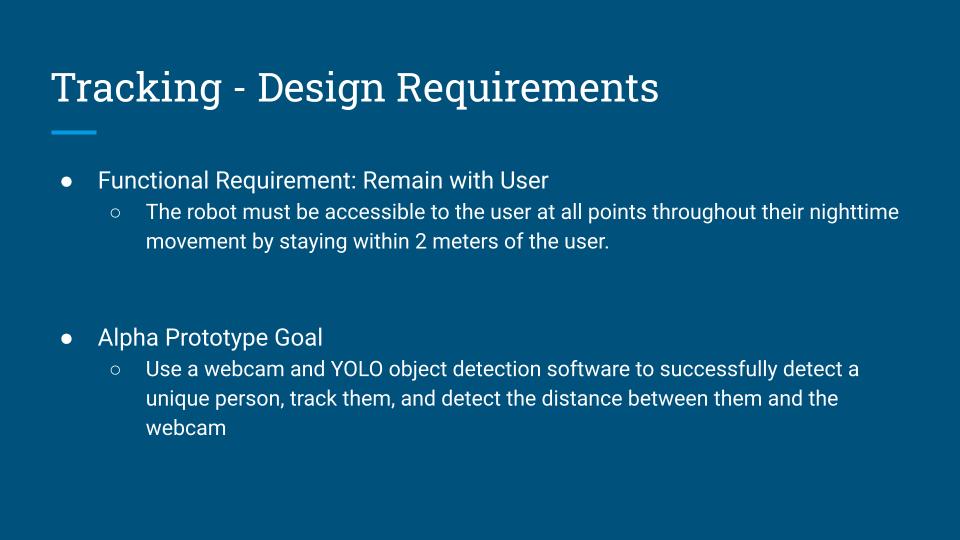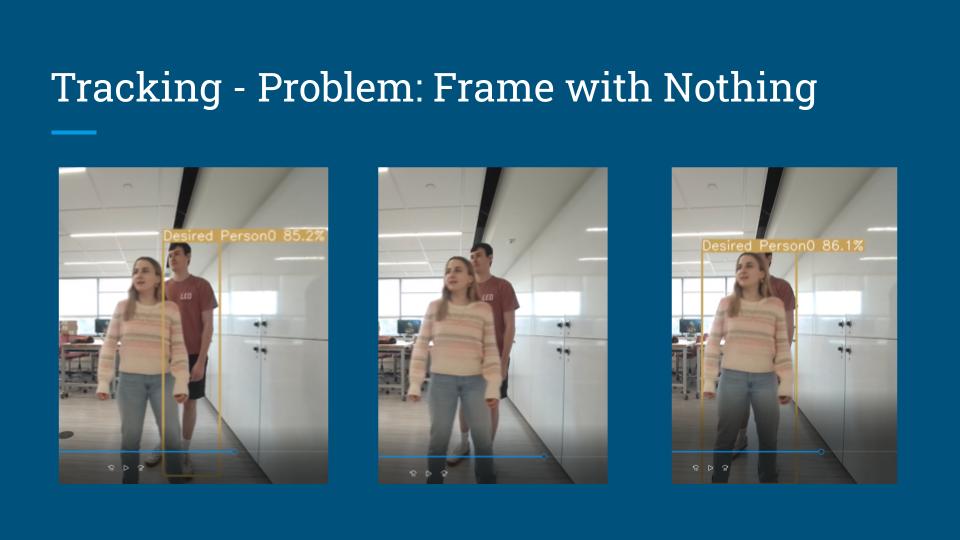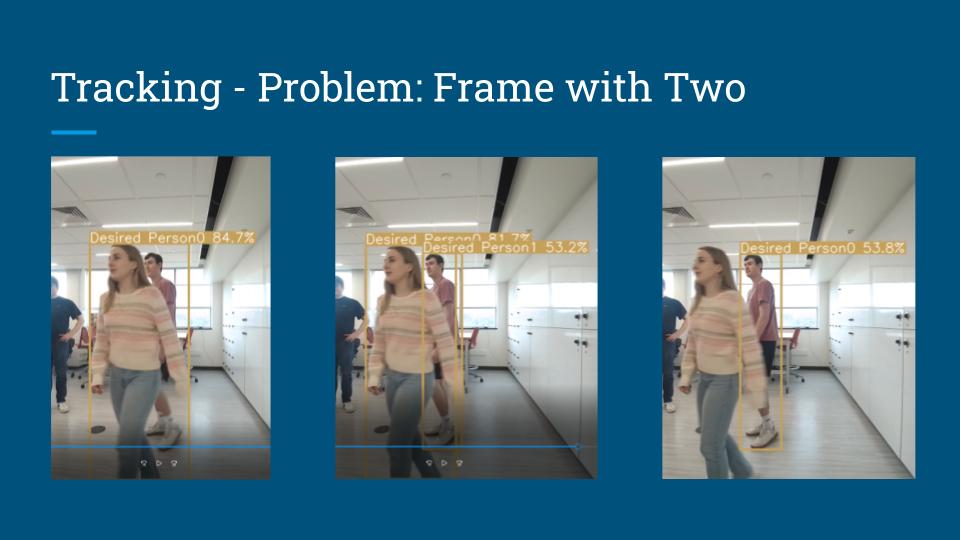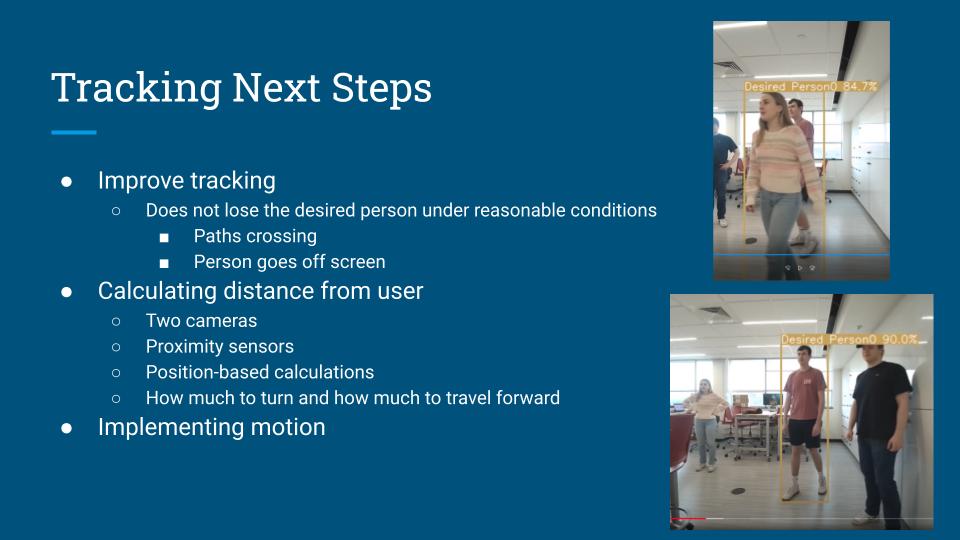Spring Semester: Week 14
We’re in the home stretch! Week 14 has consisted so far of putting the final touches on the robot and touching up the tracking code for the final Design Expo for next week. We printed some more parts for the chassis including a pegboard to mount the electronics and a case to secure the button panel. The electronics have finally been mounted (fully this time) to the robot and the wires managed as much as we could. All that’s left is testing the code and constructing an outer shell for the robot.
Spring Semester: Week 13
This week, our team presented an update to our peers and faculty. Later in the week, the tracking system was finally implemented and integrated with the proximity sensor! Electrical components were mounted and connected and the team ensured the robot’s physical appearance will reflect our team’s research.
Spring Semester: Week 12
It’s alive! The robot got moving this week in the parking lot outside of Leopard Works. The team is 3D printing mounts and axle spacers, still working on communication between computing components, and fine tuning the circuitry system. Thanks to the wizardry of our comp-sci minors, the image processing system is up from 1 frame-per-second to 30!
Spring Semester: Week 11
During Week 11, our team assembled the robot’s structure, connected and tested circuitry, and worked on integrating the various computing components (Arduino, Raspberry Pi, and Google Coral).

Spring Semester: Week 10
Parts are in and we’re excited! Drawings have been submitted to the machine shop so our focus is now shifting towards building physical circuits and optimizing computing performance.
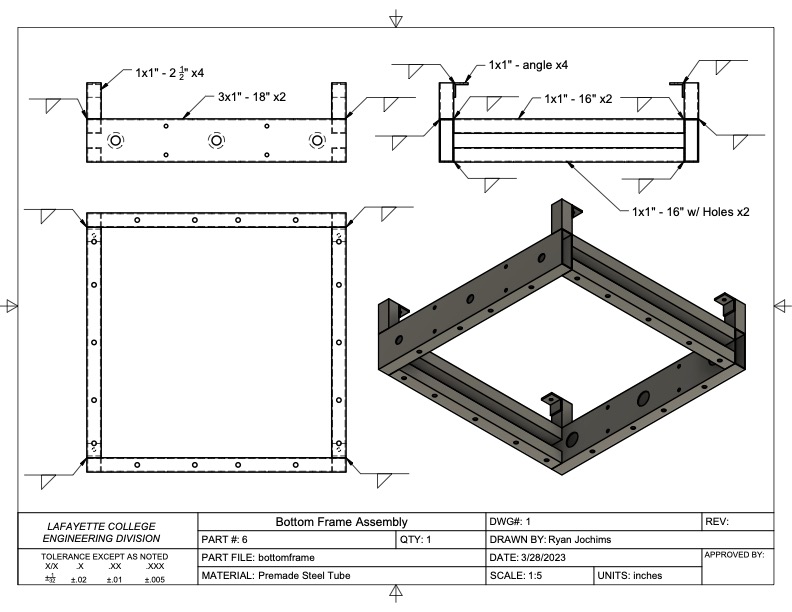
Spring Semester: Week 9
Now back on campus, our team is running full-steam ahead! We finalized the robot’s CAD components and assembly, developed and tested its control system, and experimented with different machine learning techniques.
Spring Semester: Week 8
Over spring break, members of Safer Strides spent quality time with family and friends while exploring graduate schools, beaches, forests, and mountains. As members of the group traveled across the Unites States as well as to nations north and south, we became global learners, expanding our perspectives, and enhancing our collective ability to connect with users. Cur non!
Spring Semester: Week 7
During week 7, our team ensured all parts were ordered and subteam plans were integrated. This prioritization will allow us to hit the ground running when we return from spring break! Sebastian was away from the team, competing in the Collegiate Ski and Board National Championship – Roll Pards!
Spring Semester: Week 6
It’s time to work on the Beta Prototype! We’re ordering parts, integrating subsystems in CAD, and making large (and safe) strides.
Spring Semester: Week 5
Attached below is the Alpha Prototype slide deck we shared!
Our team received very positive feedback! Our audience also helped us consider a variety of challenging use-cases to prepare for, such as inclement weather and crossing pedestrians, vehicles.
Spring Semester: Week 4
Week 4 was spent preparing for our Alpha Prototype design review which will occur at the beginning of week 5. We compiled the work we’ve done since the beginning of the semester into one digestible presentation. This should provide us with a good deal of feedback that we can use to refine our solution during the beta prototyping phase.
Spring Semester: Week 3
This week, our team received helpful feedback on our Alpha Prototype Proposal from the other senior design instructors. We updated our website theme (it looks awesome now, as you can see), adjusted some prototype plans, and kept making progress on our sub-team assignments.
Spring Semester: Week 2
Week 2! Safer Strides really dug into sub-team work this week, simultaneously making progress in multiple areas. The team researched emotional responses to shapes and colors, learned about the drive systems of electric scooters, explored YOLO object detection software, and mapped out circuitry plans. We spoke with a few members of the faculty with relevant expertise, and we’re looking forward to seeing all these big ideas come together.
Spring Semester: Week 1
Welcome back to the Safer Strides spring semester! After a relaxing winter break, we are diving right back into work starting with creating sub teams and writing our Alpha Prototype Proposal. We have teams dedicated to the three main aspects of our project: structural design, electrical components, and tracking software. By dividing all of the tasks, we hope that nobody will be overwhelmed by the enormity of the project and that the integration of the sub systems will be a bit more organized. In addition, we are revamping the overall team roles so they align more with the work we are doing. Stay tuned for more updates in the future, things are just getting started!
Fall Semester: Week 15
Week 15 has seen us wrapping up for the semester with one more set of feedback on the website and finalization of the posters for the mid-year expo. The website feedback centered on the functional requirements and associated decomposition as we are still adjusting them from the second pivot a few weeks ago. As for the decomposition, we split up our main and sub-systems to differentiate active and passive elements of our solution. The posters needed a bit of work on the layout but the information was mostly taken from the website so expect much of the same on that front. Since this is the last week of classes, the group likely won’t be meeting again as a whole until the spring semester so this will be the last update for now. Thanks for taking the time to keep up with our progress and we’ll see you in the spring semester!
Fall Semester: Week 14
Time is apparently a fluid concept so now we are at week 14 after a relaxing Thanksgiving break. To quickly summarize the previous few weeks, most of our time was spent working on refining our functional requirements and redoing our functional decomposition again. Now that we have finished with the third deliverable, we are currently working on the last touches to the website and beginning the work on the mid-year poster presentations during finals week.
Fall Semester: Week 11
Week 11 began with a very fruitful discussion that cleared up some apparent confusion about our original problem space and so we have decided once again to pivot back to the original campus security/blue light system problem. Initially, this was though to require another complete redesign of our project so far, much of the previous data and literature we had collected at the beginning of the semester was still applicable. So with this knowledge in hand, we set about redefining our functional requirements specifically for our project with some much needed clarification about the process. In addition, we revised the website significantly to accommodate the second pivot as well as prepared for the third deliverable.
Fall Semester: Week 10
Week 10 took us further into functional requirements. We studied over 35 articles from a range of sources to give ourselves a better background on our design problems. We updated progress response feedback to the website. Responses to the feedback are listed below:
Q: Where will the robot’s position be?
A: Through the finalization of our functional requirements we will determine the necessary actions and position of the robot. It won’t be obtrusive to any other persons on a trail or sidewalk.
Q: Do people actually want a robot – is this the right solution to the problem? Is there really a need?
A: Runner’s World Magazine representatives have expressed interest in our solution. Survey results have also shown interest in a robotic running solution as well.
A: We have identified the need for this robot through problem identification that can be found on the product identification page of our website. This identification has been discovered through literature review and survey results.
Q: Could the functional requirements and assumptions be displayed more visually appealing?
A: We will make sure the presentation is more visually appealing.
Q: What will the size of the robot be?
A: Through the finalization of our functional requirements we will determine the necessary size of the robot. It won’t be obtrusive to any other persons on a trail or sidewalk.
Q: How will we test the final solution?
A: We have contacts in running clubs and organizations that have expressed interest in testing our robot. These clubs and organizations represent a wide variety of runners in running distance, terrain and location, time of day, and competition level.
Q: What will the robot do?
A: Following the finalization of our functional requirements and design goals our robot will provide a solution to our identified problem.
Q: How do you know people bring phones for safety and not just music?
A: Our survey responses have demonstrated that runners use phones almost exclusively for listening to music.
Q: Have you defined what it means to keep a runner safe?
A: Our group is continuing research on runner safety. As we gain more research and narrow down our functional requirements we will provide a functional final prototype to keep runners safe.
Q: Is a robotic solution limiting our solution space possibilities?
A: As a group we are passionate about robotics. We wanted to take what we’ve learned through our market research and problem identification and combine it with our passion for robotics.
Q: What can the robot do to stop harassment?
A: Our functional requirements that will be incorporated into our design include deterrents proven through studies to deter unwanted advancements of individuals.
Q: Is noise a potential issue?
A: Relative to cars our robot will be significantly quieter and as of now we don’t consider noise to be a design constraint. If noise becomes an issue then as we design and build a final proof-of-concept robot we will reconsider our approach.
Q: Is our market no longer the Lafayette College community?
A: After adjusting our problem statement our stakeholders changed to a broader market. Now our solution will be a useful option for far more runners than just those at Lafayette College.
Fall Semester: Week 9
During week 9 we reviewed and responded to important progress feedback. We continued developing the functional requirements of our project and began the initial stages of design.
Fall Semester: Week 8
This week we stepped up our game and got down and dirty while defining our functional requirements, identifying our problem assumptions, and collecting even more reliable data to support our problem statement. As a group, we spent much of our time qualitatively and quantitatively validating our requirements to ensure that our project goals are aligned and realistic. We also were fortunate enough to speak with editors from Hearst’s Runners World Magazine, who helped us identify some more reliable data about how unsafe running is, and how often people run at night or wish to run at night. Overall this has been an extremely busy week, and with deliverable #2 due on Monday, it looks like we’ll be spending a good chunk of our weekend finalizing our deliverables!
Fall Semester: Week 7
Work was done on redesigning the website, addressing scope issues, and we began to discuss specific problems that we would like to address
Fall Semester: Week 6
After a discussion with our advisor, we have shifted our focus to runner safety. Hopefully, our solution will address issues such as injuries during runs, safety during night runs, and assistance with carrying bulkier and difficult-to-carry items
Fall Semester: Week 5
As a team, we concluded our interviews and settled on our problem of campus safety. We are currently defining the scope of our problem by conducting more interviews with an emphasis on safety concerns.
Fall Semester: Week 4
After identifying common streams between our interviews we worked on narrowing down our problem pool. This process consisted of an extensive literature review to ensure that the problems we were potentially addressing had demand.
Fall Semester: Week 3
While wrapping up the five-step problem discovery process, we identified four core areas that we were interested in problem-solving. These areas were:
- Mechanics
- Pedestrians
- Outdoor industry employees
- Dining Staff
So, we began to interview members of these fields both in person and over zoom to see if they could provide some insight into more specific problems in their fields. While initially, we thought that we were going to gather many different types of problems from these different groups, we actually ended up with some very common streams of discussion between interviews.
Fall Semester: Week 2
This week we spent a lot of time discussing several different ideas that members of the time had over the summer. While this may have not been part of the process that the design professors initially intended for us to follow, we really did enjoy the conversation because we got a great feel for where everyone’s design minds were at. Towards the end of the week, we got back on track and began to follow the five-step problem discovery process that Professor Rossman introduced us to.
Fall Semester: Week 1
Meet the team and begin the process of identifying categories that we are interested in problem-solving for!
